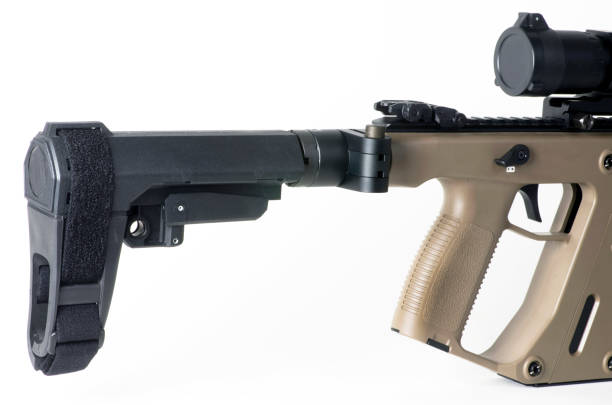Are you a gun builder looking to learn more about AR pistol braces? If so, then you’ve come to the right place! AR pistol braces are an essential part of any gun builder’s toolkit, so it’s important to understand the ins and outs of these components. In this blog post, we’ll go over what gun builders need to know about AR pistol braces, from the different types available to the best way to install them. Keep reading to find out more about the mil-spec AR-15 buttstocks and pistol braces that can take your gun build to the next level.
A Quick Overview of the Different Types of AR Pistol Braces
Gun builders everywhere are turning to AR pistol braces as an alternative to traditional buttstocks. AR pistol braces come in a variety of designs and offer shooters a more lightweight and versatile shooting platform.
The most popular AR pistol brace is the Mil-spec M4 stock. This stock is designed to be used with an AR-15 lower receiver, and has been designed to provide a stable shooting platform for those who don’t want the added bulk of a traditional buttstock. This design also offers adjustable cheek height, allowing you to customize the fit of your AR pistol brace.
Another popular option for gun builders is the adjustable KAK Blade Pistol Stabilizer Brace. This type of brace allows you to quickly adjust the length of the brace to fit your body and shooting style. It features two adjustable arms that can be used to support the firearm while shooting, or can be folded away when not in use. The KAK Blade also features a QD socket for mounting accessories.
This combination of pistol grip and adjustable stabilizing brace provides a solid grip for AR-15 pistols, giving gun builders more control over their firearm. The MOE-K2+ also features a rubber buttpad for improved comfort, as well as a QD socket for mounting accessories.
For gun builders who need an AR pistol brace that is both lightweight and adjustable, these three options provide reliable solutions. With the right choice, gun builders can customize their AR-15 pistol setup to better suit their shooting needs.
The Pros and Cons of each type of brace
AR pistol braces come in a variety of styles and materials, offering gun builders a range of options when it comes to building their firearms. Each type of brace offers its own unique benefits, but there are also some drawbacks associated with them as well. Let’s take a look at the pros and cons of each type of AR pistol brace:
Mil-Spec AR-15 Buttstocks:
Pros: Mil-spec AR-15 buttstocks offer reliable performance, providing a comfortable shooting experience for gun builders. They also come with adjustable cheek rests and buttpads, allowing for more comfortable aiming and recoil control. Plus, these stocks are often built from robust materials that can withstand the rigors of use in the field.
Cons: Mil-spec AR-15 buttstocks tend to be heavier than other types of braces, making them less ideal for carrying firearms around. Additionally, they don’t provide any support for stabilizing the firearm when shooting off-hand.
Pros: Pistol braces provide more support when shooting off-hand, as well as an adjustable strap that helps to stabilize the firearm. These braces are also lightweight and easy to install, making them an attractive option for gun builders who want to make their firearms more portable.
Cons: While pistol braces offer more support than mil-spec buttstocks, they don’t always provide enough recoil control or cheek rest support. Additionally, pistol braces are typically made from synthetic materials that may not be as durable as metal stocks.



